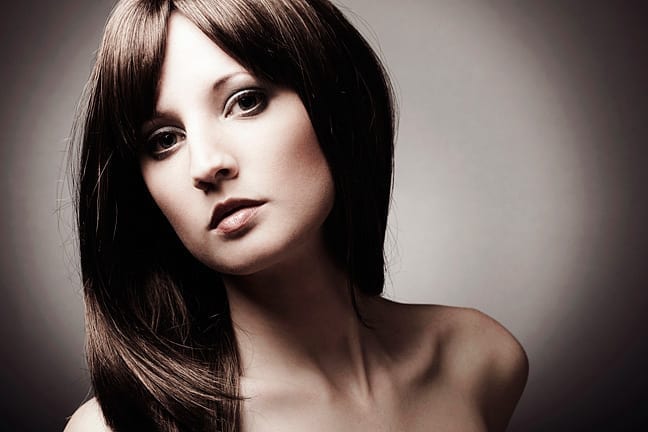To those who don’t have it, straight hair is enviable—it rarely frizzes, beautifully reflects light and is so simple to style (not to mention fairly versatile). So why do so many women with straight hair complain about their hair type?
According to the experts we spoke with, straight hair has a tendency to fall flat—fast. And when cut incorrectly, “it can make you look like you have less of it,” says Renee Serra, co-owner of Manhattan’s hip Space Salon. “Pin straight hair has no forgiving factor so any mistake—bad angles, layers or bangs—will show in spades,” she adds. Precisely why the right (and perfect) cut is critical.
QUIZ: Measure How Healthy Your Hair Looks
Mechanics of a Straight Haircut
That right cut: a blunt style—or hair that’s cut straight across. “Cutting blunt keeps the thickness and fullness of the hair, which is especially important with fine straight hair,” says Billy Lowe, celebrity hairstylist and beauty expert. Adding a few long layers is an option—it softens the lines and creates movement. Though too many can thin out the bottom and make the hair appear stringy.
Dry cutting with scissors is the preferred technique with this hair type because it creates strong, precise lines, and says Edward Tricomi, co-founder of Warren-Tricomi salons, “You can see every move you’re making and feel the shape much better.” Razors are forbidden—they sheer the hair and sever the ends, making it look as though their split.
MORE: The Best Haircut for Your Face Shape
Haircuts for Long, Straight Hair
If your hair is long, as noted, a blunt base is best with a sweeping or heavy-straight bang (a la Sandra Bullock at this year’s Golden Globes). For the sweeping style, “the bang should start at the top point of the cheekbone and angle around the face, just touching the eyebrow to the other side,” says Serra. For a fuller bang, more hair is pulled forward and cut level. A few long, strategically placed layers around the face opens it up, adds movement and can make the cut more interesting and modern.
Haircuts for Shoulder-Length, Straight Hair
With medium, or shoulder length, the Bob is best. Any variation will work—from a classic blunt to a more graduated style, where the hair is slightly longer in the front than the back. If your hair is fine, Serra suggests keeping the cut on the shorter side. “The longest you should go is about an inch or two past your shoulders, otherwise it will get weighed down and will be tough to add volume to when styling.”
Haircuts for Short, Straight Hair
A Pixie cut makes the cut for short hair—cropped on the sides with longer pieces on top (think Pink or Ginnifer Goodwin). To achieve it: “You want to cut into the hair in an abstract manner to create layers which add volume,” says Tricomi. Unlike long straight hair, layers (and lots of them) give this style movement, lift and versatility—you can wear it loose and tousled, slightly spiked or gracefully slicked back.
MORE: The Best Hair Color for Your Skintone
Updos for Straight Hair
As for updos, a classic or low ponytail is timeless and works for almost any occasion. Also popular among the experts is a basic chignon, only tied a little looser so it looks more modern.
What is your favorite hairstyle that makes you feel beautiful? Send a picture to [email protected] and show it off.




































